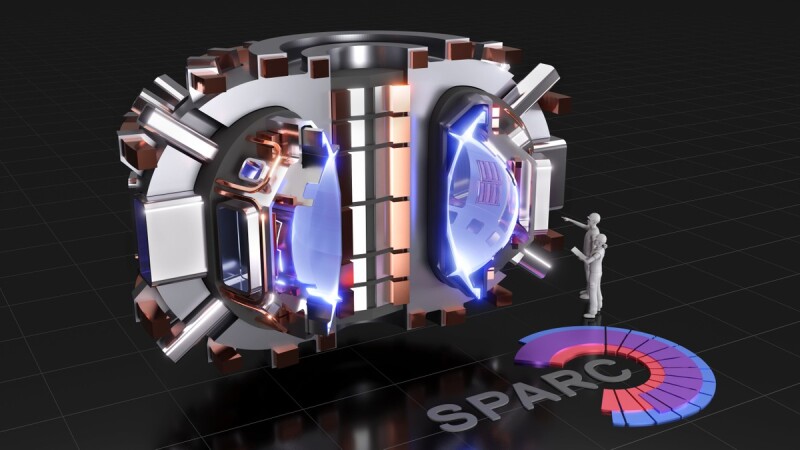Commercial nuclear fusion, once a pie-in-the-sky endeavor relegated to science fiction and Hollywood-spawned DeLorean-based time machines, is nearing science fact with new waves of investment flooding the industry on the promise of bountiful, zero-emissions energy. World leaders and activists are engaging with industry to help quell emissions levels and combat climate change by urging the transition away from fossil fuels and into various forms of renewable energy sources, mainly wind and solar.
Traditional nuclear power, using fission to split uranium atoms, has been around for decades. Although low on emissions, it is disadvantaged by the decay of the radioactive elements that were created when the uranium atoms were split apart, creating a hazardous radioactive byproduct.
In nuclear fusion, the source of energy in the sun and stars, atoms are combined or fused together to form a larger atom. Long-lived radioactive waste is not generated.
Oil and gas companies, who have been active participants in the energy transition, have started to see the potential in the future of fusion and are putting their money into various pilot projects. Italy’s Eni recently revealed it had taken part in a $1.8-billion funding round for a fusion project being forwarded by Commonwealth Fusion System (CFS), a company set up by the Massachusetts Institute of Technology to produce energy by fusing atoms using high-temperature superconducting (HTS) magnet technology.
CFS has raised more than $2 billion in funding since it was founded in 2018. Other investors in the company include Bill Gates and Google.
“The world is ready to make big investments in commercial fusion as a key part of the global energy transition,” said said Bob Mumgaard, chief executive of CFS. “This diverse group of investors includes a spectrum of capital from energy and technology companies to venture capitalists, hedge funds, and university endowments who believe in the impact fusion will have as we look for large-scale solutions to decarbonize.”
Eni was not the sole oil company in the mix of CFS investors. Norway’s Equinor added an investment in CFS to its zero-carbon portfolio that already includes offshore wind and solar.
“Fusion energy has the potential to be a game-changer providing clean energy at scale,” said Carri Lockhart, executive vice president for technology, digital and innovation at Equinor. “The technology is promising, and we want to be part of the CFS journey to mature the technology and the market potential. Our participation in the CFS fundraising represents our largest venture investment to date.”
Equinor made the investment under its Equinor Ventures (EV) unit, a venture capital arm of Equinor with a mandate to deploy $750 million over 5 years to invest in promising technologies and companies. EV made its first investment in the US-based startup CFS in 2020 and the total investment in CFS constitutes roughly 10% of the $750-million mandate.
In September 2021, CFS announced the successful test of the world’s strongest HTS fusion magnet. The latest funding round is set to raise capital to construct, commission, and operate SPARC, the world’s first commercially relevant net energy fusion machine.
Success will enable the company to begin work on ARC, the first commercial power plant, which includes developing support technologies, advancing the design, identifying the site, and assembling the partners and customers for the future of fusion power.
The SPARC is to be built by 2025 and will speed up progress toward having the ARC ready by the early 2030s.
More Traditional Nuclear in the Mix
Additional startups are working on nuclear-based solutions to provide clean energy to the masses. NuScale Power, with its nuclear small modular reactor (SMR) technology, is working to deliver a fresh take on more traditional, scalable, and reliable carbon-free nuclear power.
The company calls its NuScale Power Module (NPM) “the only viable, near-term deployable SMR technology.” Capable of generating 77 MWe of electricity, the NPM is scalable via the company’s VOYGR power plant design, which can accommodate configurations of four, six, and 12 modules that can provide up to 924 MW per day of electricity.
In 1965, nuclear power generated 24 TWh a year. All wind, solar, geothermal, and biomass power plants combined generated 15 TWh. Starting in the 2000s, nuclear generation plateaued, and renewables kept right on increasing, which resulted in renewable power generation exceeding nuclear generation in 2020. By that time, renewables were generating a combined 3,200 TWh of power while nuclear generated about 2,700 TWh, roughly the same output as in 2000.
According to NuScale, the advanced design of its NPM eliminates the need for two-thirds of the safety systems and components found in today’s large commercial reactors, which significantly improves the economics of NuScale plants compared to traditional nuclear power plants. NuScale’s reactors are designed to safely shut down in an emergency and self-cool, indefinitely, with no need for operator or computer action, power, or the addition of water —a first for any commercial nuclear power plant.
NuScale is currently working with the Utah Associated Municipal Power Systems to deploy a NuScale VOYGR power plant in 2029.
Related Articles
Sustainable Recovery: The Multiple Benefits of Collaboration
Oil Major Invests in Nuclear Startup Company
ADNOC Will Use up to 100% Nuclear and Solar Power Starting Next Year
Billionaires Back Building of Small Modular Reactors at Abandoned Fossil Site
Speeding the Development of Fusion Energy. DOE/Princeton Plasma Physics Laboratory. Science Daily.


